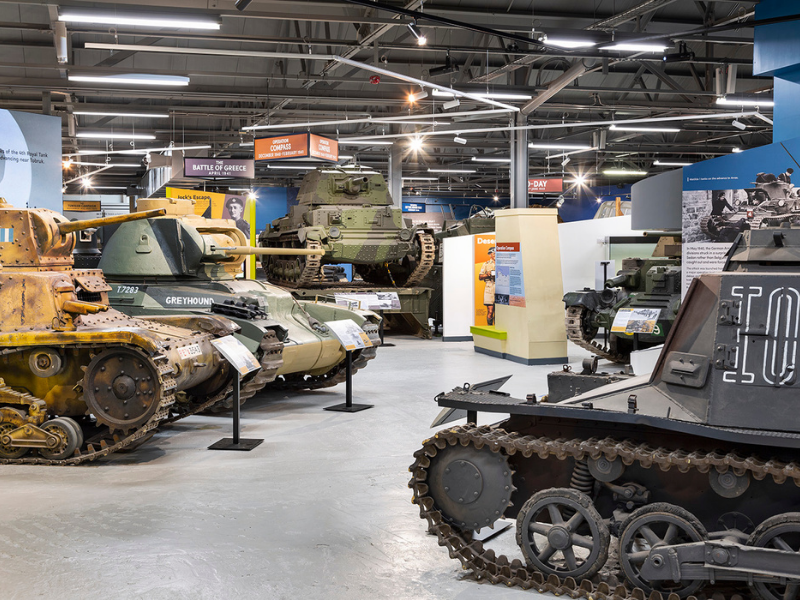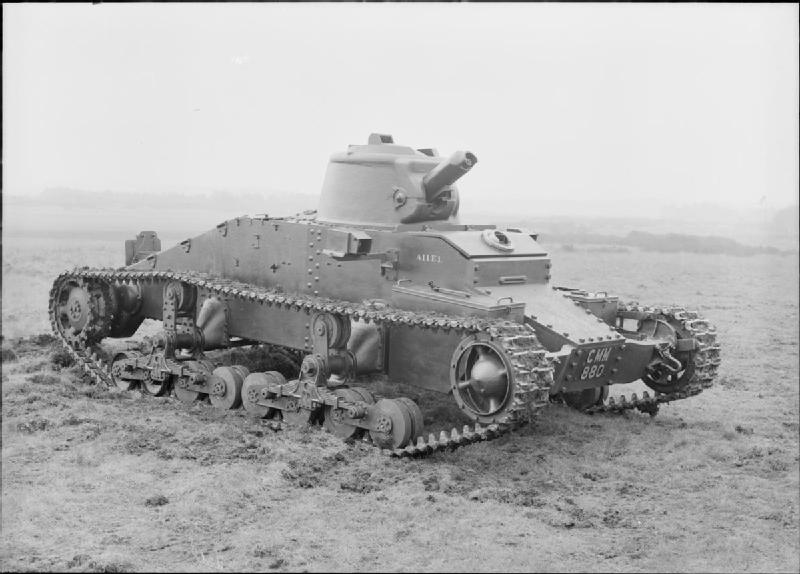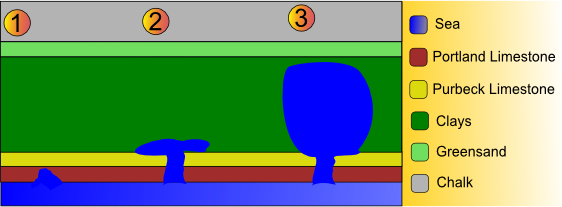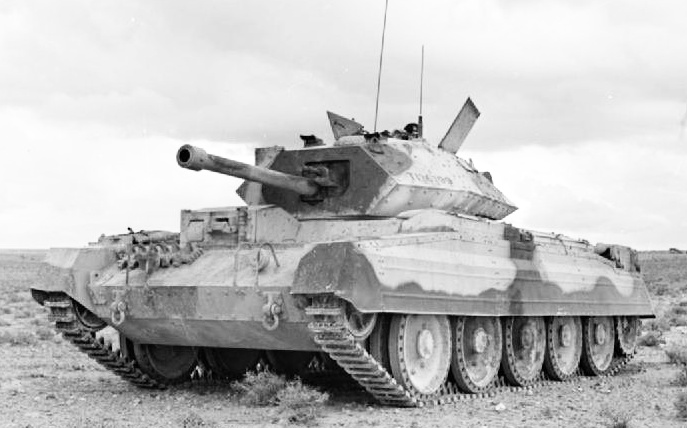|
Valiant Tank
The Tank, Infantry, Valiant (A38) was a British tank design of the Second World War that only reached the prototype stage. It was intended to meet a specification for a well-armoured, light-medium tank, for use against Japanese forces in the South-East Asia theatre. The prototype demonstrated that the design was a failure and this sole example produced was retained by the School of Tank Technology as a lesson to its students. Design and development The Valiant, under General Staff specification A38, began as a candidate for an assault tank, with the thickest armour on the lowest possible weight, for use in the Far East. It was to be similar in intention to the 40-ton A33 Excelsior although far lighter. As the Valiant managed the same 114 mm frontal armour with only 27 tons, it managed to achieve its primary goal, but only by making unacceptable compromises elsewhere. At a time when British tank design was already at its nadir, this "terrible price for the weight concess ... [...More Info...] [...Related Items...] OR: [Wikipedia] [Google] [Baidu] |
The Tank Museum
The Tank Museum (previously the Bovington Tank Museum) is a collection of armoured fighting vehicles at Bovington Camp in Dorset, South West England. It is about north of the village of Wool and west of the major port of Poole. The collection traces the history of the tank with almost 300 vehicles on display. It includes Tiger 131, the only working example of a German Tiger I tank, and a British First World War Mark I, the world's oldest surviving combat tank. It is the museum of the Royal Tank Regiment and the Royal Armoured Corps and is a registered charity. History The writer Rudyard Kipling visited Bovington in 1923 and, after viewing the damaged tanks that had been salvaged at the end of the First World War, recommended that a museum be set up. A shed was established to house the collection but was not opened to the general public until 1947. George Forty, who was appointed director of the museum in 1982, expanded and modernized the collection. He retired in 1993 afte ... [...More Info...] [...Related Items...] OR: [Wikipedia] [Google] [Baidu] |
Infantry Tank
The infantry tank was a tank concept developed by the United Kingdom and France in the years leading up to World War II. Infantry tanks were designed to support infantrymen in an attack. To achieve this, the vehicles were generally heavily armoured to allow them to operate in close concert with infantry even under heavy fire. The extra armour came at the expense of speed, which was not an issue when supporting relatively slow-moving foot soldiers. Once an attack supported by infantry tanks had broken through heavily defended areas in the enemy lines, faster tanks such as cruiser or light tanks were expected to use their higher speed and longer range to operate far behind the front and cut lines of supply and communications. The infantry tank was superseded by the "Universal Tank" concept which could adequately perform the roles of both infantry and cruiser tank, as represented by the Centurion which replaced both the Churchill and any medium or cruiser tanks then in service. ... [...More Info...] [...Related Items...] OR: [Wikipedia] [Google] [Baidu] |
Abandoned Military Projects Of The United Kingdom
Abandon, abandoned, or abandonment may refer to: Common uses * Abandonment (emotional), a subjective emotional state in which people feel undesired, left behind, insecure, or discarded * Abandonment (legal), a legal term regarding property ** Child abandonment, the extralegal abandonment of children ** Lost, mislaid, and abandoned property, legal status of property after abandonment and rediscovery * Abandonment (mysticism) Art, entertainment, and media Film * ''Abandon'' (film), a 2002 film starring Katie Holmes * ''Abandoned'' (1949 film), starring Dennis O'Keefe * ''Abandoned'' (1955 film), the English language title of the Italian war film ''Gli Sbandati'' * ''Abandoned'' (2001 film), a Hungarian film * ''Abandoned'' (2010 film), starring Brittany Murphy * ''Abandoned'' (2015 film), a television movie about the shipwreck of the ''Rose-Noëlle'' in 1989 * ''Abandoned'' (2022 film), starring Emma Roberts * ''The Abandoned'' (1945 film), a 1945 Mexican film * ''The Aban ... [...More Info...] [...Related Items...] OR: [Wikipedia] [Google] [Baidu] |
World War II Tanks Of The United Kingdom
The world is the totality of entities, the whole of reality, or everything that exists. The nature of the world has been conceptualized differently in different fields. Some conceptions see the world as unique, while others talk of a "plurality of worlds". Some treat the world as one simple object, while others analyze the world as a complex made up of parts. In scientific cosmology, the world or universe is commonly defined as "the totality of all space and time; all that is, has been, and will be". Theories of modality talk of possible worlds as complete and consistent ways how things could have been. Phenomenology, starting from the horizon of co-given objects present in the periphery of every experience, defines the world as the biggest horizon, or the "horizon of all horizons". In philosophy of mind, the world is contrasted with the mind as that which is represented by the mind. Theology conceptualizes the world in relation to God, for example, as God's creation, ... [...More Info...] [...Related Items...] OR: [Wikipedia] [Google] [Baidu] |
Infantry Tanks
The infantry tank was a tank classification, tank concept developed by the United Kingdom and French Third Republic, France in the years leading up to World War II. Infantry tanks were designed to support infantrymen in an attack. To achieve this, the vehicles were generally heavily vehicle armour, armoured to allow them to operate in close concert with infantry even under heavy fire. The extra armour came at the expense of speed, which was not an issue when supporting relatively slow-moving foot soldiers. Once an attack supported by infantry tanks had broken through heavily defended areas in the enemy lines, faster tanks such as cruiser tank, cruiser or light tanks were expected to use their higher speed and longer range to operate far behind the front and cut Line of communication, lines of supply and communications. The infantry tank was superseded by the "Universal Tank" concept which could adequately perform the roles of both infantry and cruiser tank, as represented by the ... [...More Info...] [...Related Items...] OR: [Wikipedia] [Google] [Baidu] |
David Fletcher (military Historian)
David John Fletcher (born 1942) is an English author and military historian specialising in the history of armoured warfare, particularly that of the United Kingdom. He was an employee of The Tank Museum The Tank Museum (previously the Bovington Tank Museum) is a collection of armoured fighting vehicles at Bovington Camp in Dorset, South West England. It is about north of the village of Wool and west of the major port of Poole. The collectio ..., Bovington from 1982 until December 2012, becoming the museum's longest serving member of staff. Earlier that year, he was a panellist on Operation Think Tank, an international symposium on tanks, held in California. He also presents contemporary media such as YouTube for the Tank Museum. Until 2023, David Fletcher hosted a regular video series on The Tank Museum's YouTube channel called 'Tank Chats', in which he gave viewers a brief insight in to a specific tank in the Museum's collection. In his final year at Bovington, he w ... [...More Info...] [...Related Items...] OR: [Wikipedia] [Google] [Baidu] |
Lulworth Cove
Lulworth Cove is a cove near the village of West Lulworth, on the Jurassic Coast in Dorset, southern England. It is privately owned by the Weld family along with Durdle Door and the Lulworth Estate. The cove is one of the world's finest examples of such a landform, and is a World Heritage Site and tourist location with approximately 500,000 visitors every year, of whom about 30 per cent visit in July and August. It is close to the rock arch of Durdle Door and other Jurassic Coast sites. Geology The cove has formed as a result of bands of rock of alternating geological resistance running parallel to the coastline (a concordant coastline). On the seaward side the clays and sands have been eroded. A narrow (less than ) band of Portland limestone rocks forms the shoreline. Behind this is a narrow (less than ) band of slightly less-resistant Purbeck limestone. Behind this are of much less-resistant clays and greensands; Weald Clays, Gault and Upper Greensand. Forming t ... [...More Info...] [...Related Items...] OR: [Wikipedia] [Google] [Baidu] |
Centaur Tank
The Cromwell tank, officially Tank, Cruiser, Mk VIII, Cromwell (A27M), was one of the series of cruiser tanks fielded by Britain in the Second World War. Named after the English Civil War–era military leader Oliver Cromwell, the Cromwell was the first tank put into service by the British to combine high speed from a powerful, reliable engine (the Rolls-Royce Meteor) and reasonable armour. The intended dual-purpose high-velocity gun could not be fitted in the turret, so a medium-velocity dual-purpose gun was fitted instead. Further development of the Cromwell combined with a high-velocity gun led to the Comet tank. The name "Cromwell" was initially applied to three vehicles during development. Early Cromwell development led to the creation of the A24 Cavalier. Later Cromwell development led to the creation of the competing Centaur tank (officially the ''Tank, Cruiser, Mk VIII, Centaur (A27L)''). This was closely related to the Cromwell, both vehicles being externally simila ... [...More Info...] [...Related Items...] OR: [Wikipedia] [Google] [Baidu] |
Ordnance QF 95 Mm Howitzer
The Ordnance QF 95-mm howitzer was a British howitzer built in two versions during the Second World War. The tank howitzer version was accepted for service use, but the infantry version was not. Design and development Tank howitzer The Ordnance QF 95-mm tank howitzer was designed to be fitted to some later British tanks so they could lay smoke screens or fire HE or HEAT/Hollow Charge shell against concrete targets like pillboxes in the "close support" of infantry. A HESH round may have been issued after World War II. The 95 mm howitzer used fixed ammunition with a projectile, rather than separate charge and round common for artillery howitzers. The tank howitzer was used to arm the Churchill Mark V and VIII, the Cromwell VI & VIII and the Centaur IV tanks. The howitzer was built up from a section of a QF 3.7-inch anti-aircraft gun barrel, the breech mechanism of the Ordnance QF 25 pounder field gun/howitzer and the recoil mechanism of the Ordnance QF 6 pounder anti-tank ... [...More Info...] [...Related Items...] OR: [Wikipedia] [Google] [Baidu] |
Rolls-Royce Meteor
The Rolls-Royce Meteor later renamed the Rover Meteor is a British tank engine that was developed during the Second World War. It was used in British tanks up to 1964. It was a result of co-operation between Leyland Motors and Rolls-Royce who between them in 1941 had suggested that a specialised de-rated version of the Merlin aero-engine would be highly suitable for use in armoured fighting vehicles. The Meteor was developed from the Merlin by W. A. Robotham and his chassis design and development division at Clan Foundry, Belper, as they were not involved in aero-engine work and his engineers were under-used. With the aid of engineers from Leyland, who were engaged in tank work, he considered RR's two V12s; the Kestrel, while having more power than the existing "Liberty" or Meadows engines, did not provide the desirable 20 bhp per ton (producing only 475 bhp on "pool" petrol) required, so the 1,030 bhp (770 kW) Merlin III was chosen. Also, the Merlin was b ... [...More Info...] [...Related Items...] OR: [Wikipedia] [Google] [Baidu] |
Rolls-Royce Meteorite
The Rolls-Royce Meteorite, also known as the Rover Meteorite, was a post-war British V8 petrol or diesel engine was derived from the Rolls-Royce Meteor tank engine. Development In 1940 William Robotham who led a chassis design and development division at Clan Foundry in Belper, and Henry Spurrier, a director Leyland Motors, began investigating the use of Rolls-Royce aero engines as tank power-plants. Both men felt that continued use of the War Office's preferred Nuffied Liberty to be a retrograde step in the development of British tanks. The Liberty had been designed in 1917 and by this time was only able to produce a maximum power output of . Their requirements were the engine had to fit into the same engine compartment as the Liberty, and their aspiration was it would offer a power-to-weight ratio of for the proposed British tank designs. Initially Robotham and Spurrier investigated the use of a naturally aspirated version of the Rolls-Royce Kestrel engine. The Kestrel ... [...More Info...] [...Related Items...] OR: [Wikipedia] [Google] [Baidu] |
Chertsey
Chertsey is a town in the Borough of Runnymede, Surrey, England, southwest of central London. It grew up around Chertsey Abbey, founded in AD 666 by Earconwald, St Erkenwald, and gained a municipal charter, market charter from Henry I of England, Henry I. A bridge across the River Thames first appeared in the early 15th century. The River Bourne, Chertsey, River Bourne through the town meets the Thames at Weybridge. The Anglicanism, Anglican church has a medieval tower and chancel roof. The 18th-century listed buildings include the current stone Chertsey Bridge and Botleys Mansion. A curfew bell, rung at 8pm on weekdays from Michaelmas to Lady Day ties with the romantic local legend of Blanche Heriot, marked by a statue of her and the bell at Chertsey Bridge. Green areas include the Thames Path National Trail, Chertsey Meads and a round knoll (St Ann's Hill) with remains of a prehistoric Hillfort, hill fort known as Eldebury Hill. Pyrcroft House dates from the 18th century and ... [...More Info...] [...Related Items...] OR: [Wikipedia] [Google] [Baidu] |







